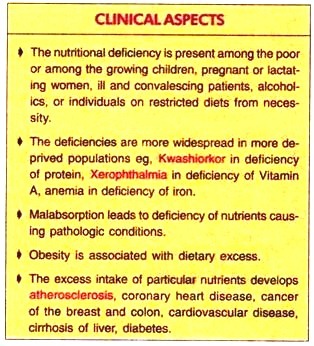ADVERTISEMENTS:
The below mentioned article provides a short note on Planning a Balanced Diet.
Principles in Planning a Balanced Diet:
In planning a balanced diet it is to be aimed that the diet must contain various groups of foodstuffs such as energy yielding foods, body building foods and protective foods in the correct proportions. The constituents of balanced diet differ according to age, sex, physical activity, economic status and the physiological condition.
ADVERTISEMENTS:
A. Energy Yielding Foods:
1. This group contains high carbohydrates and also pure fats and carbohydrates.
They are divided into two groups:
(a) Cereals, roots and tubers and
ADVERTISEMENTS:
(b) Pure carbohydrates and fats.
2. Cereals provide proteins, certain minerals and vitamins in addition to energy in the diets of the low-income groups.
3. Roots and tubers provide some amounts of proteins, minerals and vitamins.
4. Pure carbohydrates and fats provide only energy.
B. Body Building Foods:
These contain high protein and are divided into two groups:
(a) Milk, egg, meat and fish,
(b) Pulses, oilseeds and nuts.
ADVERTISEMENTS:
C. Protective Foods:
The protective foods are rich in proteins, vitamins and minerals.
These are classified into two groups:
(a) Foods rich in vitamins, minerals and proteins of high biologic value e.g., milk, egg, fish and liver.
ADVERTISEMENTS:
(b) Foods rich in certain vitamins and minerals only e.g., green leafy vegetables and some fruits.
Balanced diets at high cost:
Large amounts of costly foods such as milk, eggs, meat, fish and fruits and moderate quantities of cereals, pulses, nuts and fats.
Balanced diets at moderate cost:
ADVERTISEMENTS:
Moderate amounts of milk, egg, meat, fish, fruits, fat and large amounts of cereals, pulses, nuts and green leafy vegetables.
Balanced diets at low cost:
Small amounts of milk, egg, meat, fish, fat and large amounts of cereals, pulses, nuts and green leafy vegetables.
Food Toxins and Additives:
ADVERTISEMENTS:
1. A good number of potentially harmful compounds are present in foods. Some occur naturally. They include harmful substances such as the neurotoxins from shellfish or mushrooms, goitrogens from plants of the cabbage family, bean compounds that interfere with collagen formation.
2. Pesticides and packaging materials are added to food through inadvertent contamination.
3. Many compounds are added to foods in order to preserve them or to add colour, flavour or texture. Some of the additives may be harmful.
4. Consumption of fresh and unprocessed foods are advised in order to minimize intake of natural toxins and additives.

